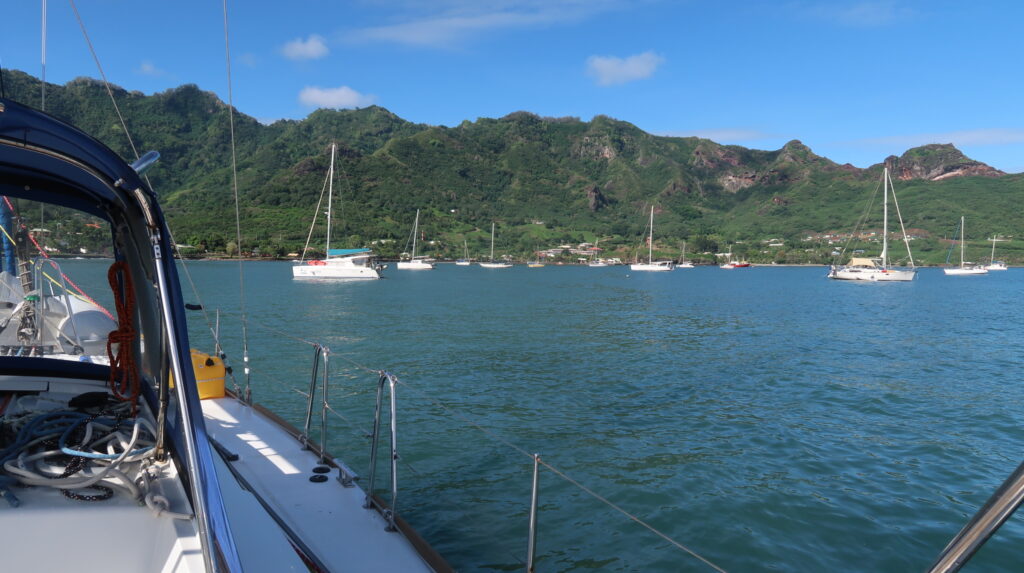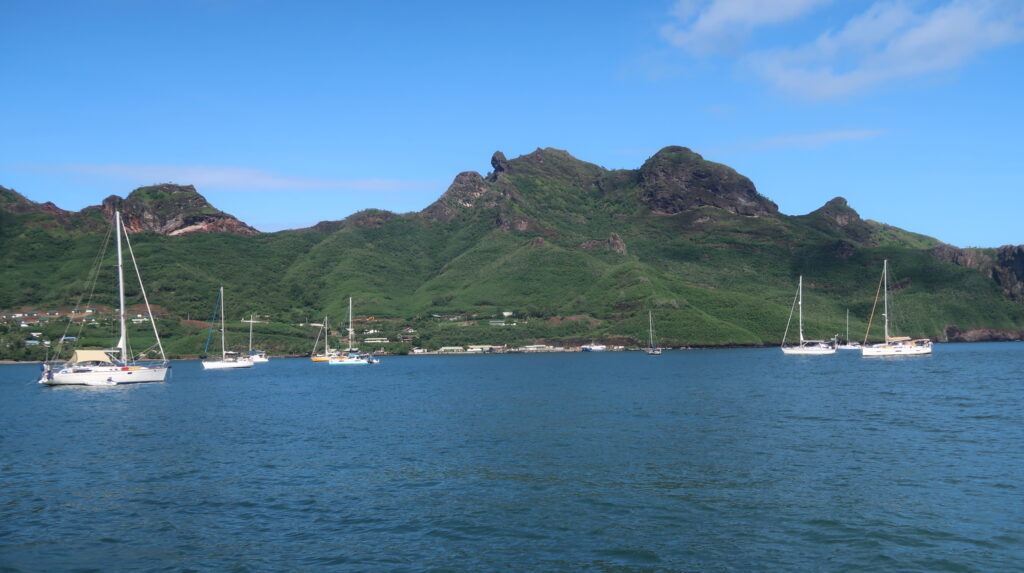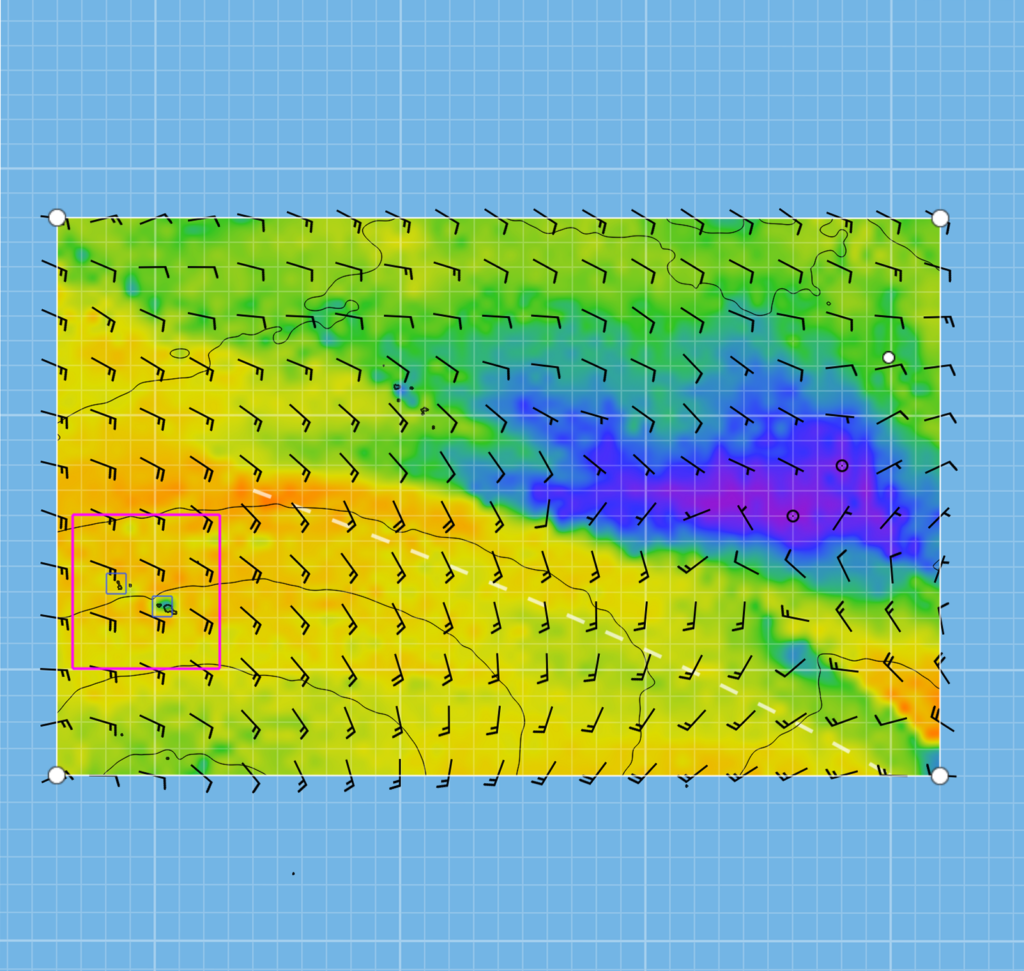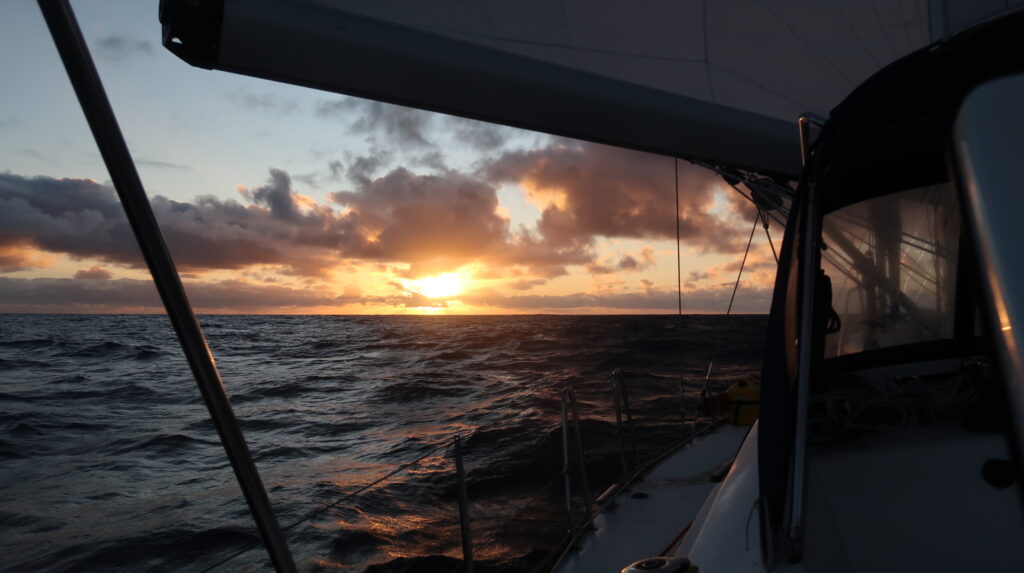Yesterday afternoon, August 20, I anchored in Baie de Taiohae on the island of Nuku-Hiva in the Marquesas island group in French Polynesia after a 5500 nm, 45 day passage from Puerto Montt, Chile. It’s by far the longest passage I’ve done, or will need to do, to complete my solo voyage to 7 continents and my solo circumnavigation.
This morning, using my spinnaker halyard to lift my dinghy off the foredeck where it is strapped down during passage, and muscling my 6 hp Yamaha outboard motor onto its transom, I connected the gas tank, primed it and and crossed my fingers it would start. Luckily it did with no drama – not always a sure thing after it’s been bumped around all those days at sea.
Taking the dinghy into town, my first task was to complete clearing-in paperwork with the Gendarmarie. That done, I’m now good to stay in French Polynesia up to 90 days. Some cruisers get long-stay visas and stay here for months, even years. Kevin Ellis at Yacht Services Nuku-Hiva made this clearing-in process very streamlined. After exploring a few local shops and getting cash at the ATM, I also had my first restaurant meal and beer in a long time!
I plan to stay here about a week to add to my provisions, top off diesel supplies, and fill the propane tank I’ve been using (the second one is still full). When I’m in a place with resources it makes sense to fill up everything – I’ll need it eventually. I ran my watermaker for a couple of hours while motoring in here so I’m set for fresh water. I can also get laundry done and dump accumulated garbage from my passage. With chores done, I hopefully will have some days to relax, look around, maybe rent a car for a day to tour the island. And check out more of the restaurants here!
Unfortunately, I lost 6 weeks from my original schedule for various reasons, 6 weeks I would certainly like to have back now so that I could take a more leisurely island-hopping route on to Australia, which will be my 5th continent. As it is, I need to keep moving. From here I plan to sail southwest to Rangiroa in the Tuomotus island group and anchor inside the atoll for a couple of days. Then it’s on to Huahine, my last stop in French Polynesia. Having been to Tahiti (Papeete) and Moorea several times over the years, I have no desire to go back. They are crowded with cruising boats and tourists engaged in all sorts of loud, annoying water activities. The locals have also imposed increasingly tight restrictions on where cruising boats can anchor at these islands as well as Raiatea and Bora Bora, a long-simmering conflict that has seen cruising boats and dinghies sometimes damaged from vengeful locals.
From Huahine I’ll sail directly to Suvasuva, Fiji. I really wanted to stop in Tonga (Vava’u), a country I’ve never visited, and it’s on the way to Fiji, but I really don’t have time. I plan to have the boat in a secure location in Australia for the tropical storm season which traditionally begins in November. “Traditionally” is becoming a broken word when it comes weather. Climate change is eroding weather patterns that sailors have relied on for centuries.
As I explore this beautiful volcanic island of Nuku-Hiva I’ll be posting more photos.



